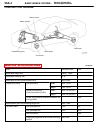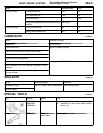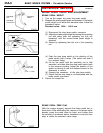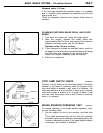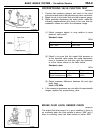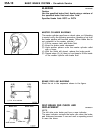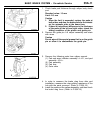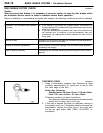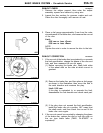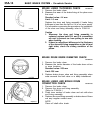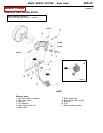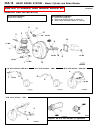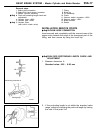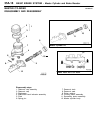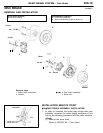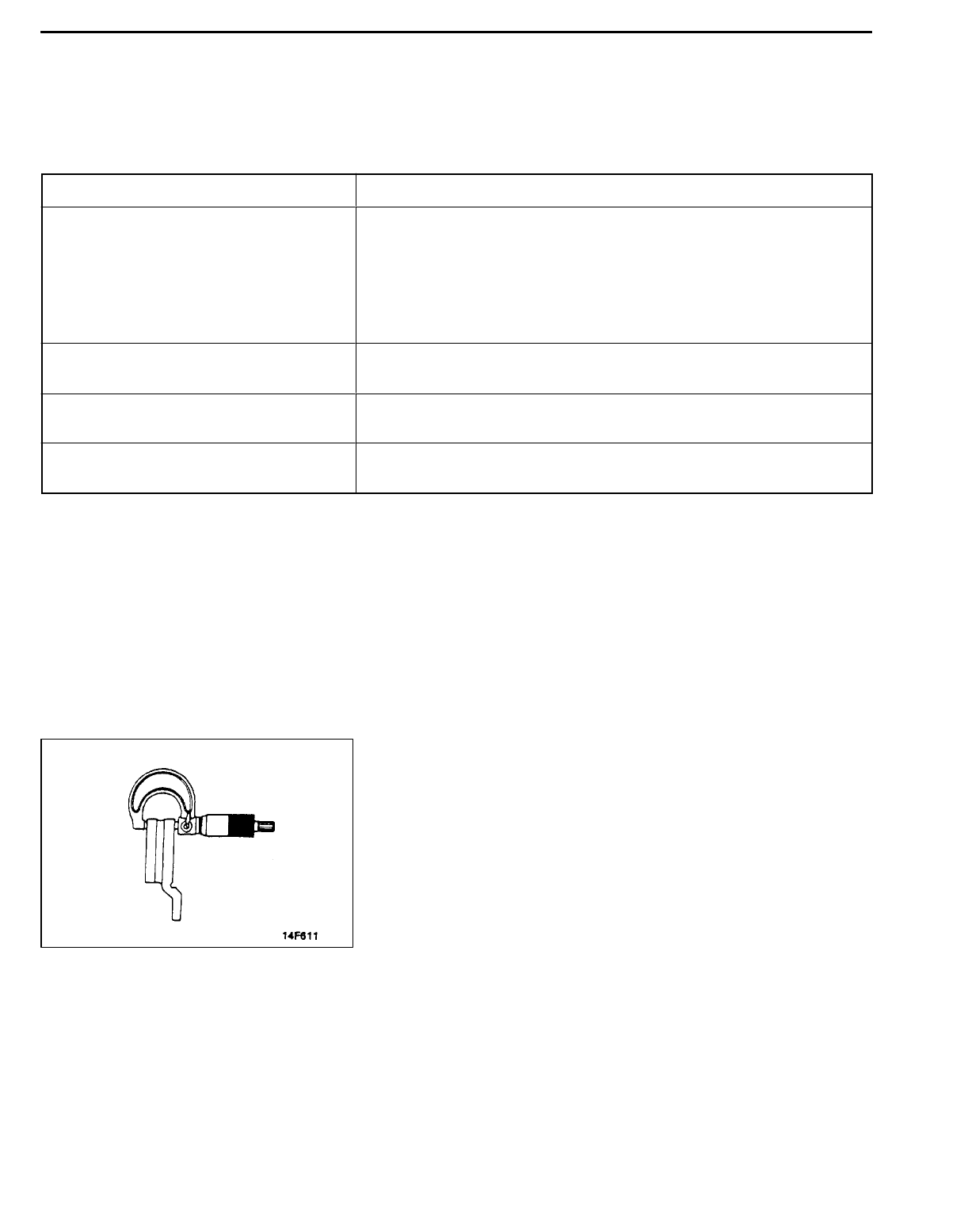
BASIC BRAKE SYSTEM -
On-vehicle Service
35A-12
DISC BRAKE ROTOR CHECK
35100290012
Caution
When servicing disc brakes, it is necessary to exercise caution to keep the disc brakes within
the allowable service values in order to maintain normal brake operation.
Before re-finishing or re-processing the brake disc surface, the following conditions should be checked.
Inspection items Remarks
Scratches, rust, saturated lining materials
and wear
D
If the vehicle is not driven for a certain period, the sections of
the discs that are not in contact with lining will become rusty, causing
noise and shuddering.
D
If grooves resulting from excessive disc wear and scratches are
not removed prior to installing a new pad assembly, there will
momentarily be inappropriate contact between the disc and the
lining (pad).
Run-out or drift Excessive run-out or drift of the discs will increase the pedal depression
resistance due to piston knock-back.
Change in thickness (parallelism) If the thickness of the disc changes, this will cause pedal pulsation,
shuddering and surging.
Inset or warping (flatness) Overheating and improper handling while servicing will cause inset or
warping.
THICKNESS CHECK
35100240017
1. Using a micrometer, measure disc thickness at eight
positions, approximately 4 5
_
apart and 10 mm in from
the outer edge of the disc.
Brake disc thickness
Standard value: 24.0 mm <Front>, 10.0 mm <Rear>
Limit: 22.4 mm <Front>, 8.4 mm <Rear>
Thickness variation (at least 8 positions)
The difference between any thickness measurements
should not be more than 0.015 mm.
2. If the disc is beyond the limits for thickness, remove it
and install a new one. If thickness variation exceeds the
specification, replace the brake disc or turn rotor with
on the car type brake lathe (“MAD, DL-8700PF” or
equivalent).



